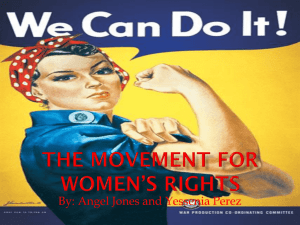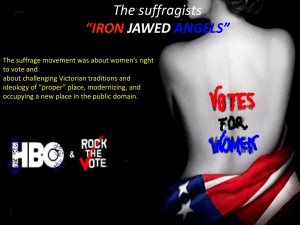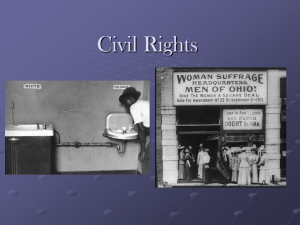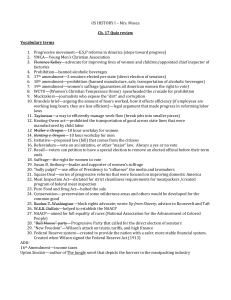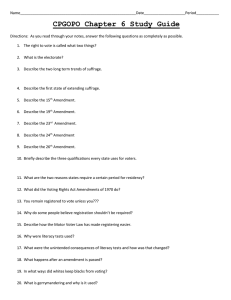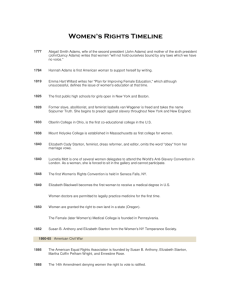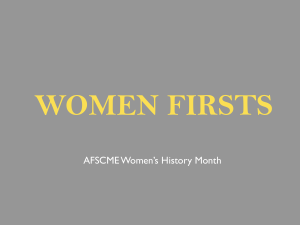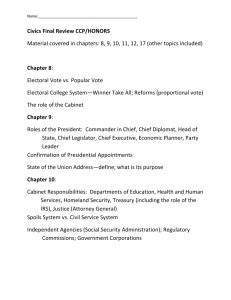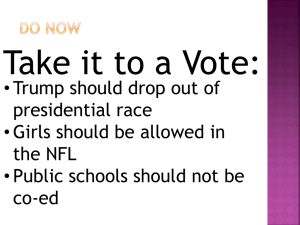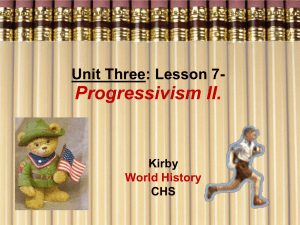Women Suffrage
advertisement
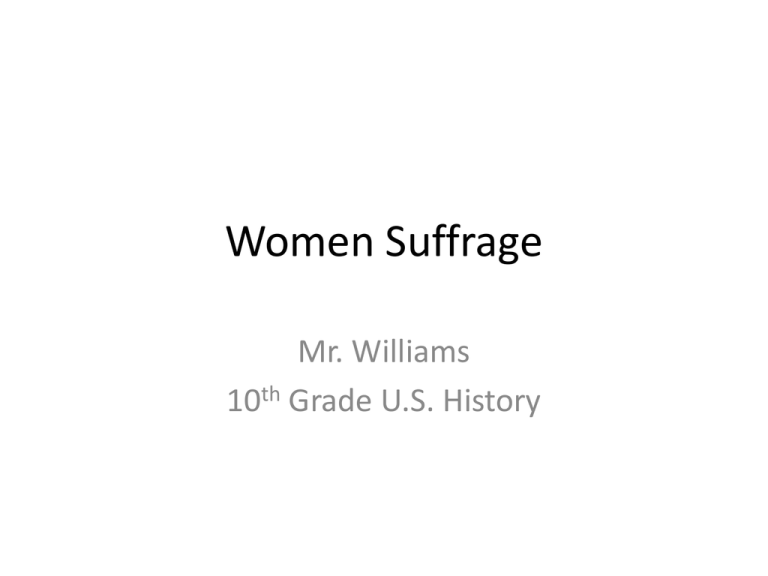
Women Suffrage Mr. Williams 10th Grade U.S. History New Opportunities for Women • By 1900, more than one-third of college students were women • Started out engaging in reform movements: Example Jane Addams and the Settlement Houses • Women worked as teachers and nurses, but also as bookkeepers, typists, secretaries, shop clerks, and journalists • Working class women worked in the garment industry •Educated women blocked from medicine, law, and the clergy • Fewer than 1500 women practiced law in 1900, only 6% of women practiced medicine “This is the women’s age. At last…women are coming into the labor and festival of life on equal terms with men.” Why Organize? • Sense of Christian Mission • Fear of social upheaval because of political tensions • Concern about power of wealthy individuals and corporations • Wanting to Americanize immigrants and fight for rights of others who needed help Women’s Trade Union League (WTUL) • Middle class women workers • Wanted to limit hours • Regulate working conditions • 1908 Muller v. Oregon : Limited work day for women to 10 hours a day Jane Addams • Opened the Hull House in Chicago in 1889 • Practiced Idea of Social Gospeladvocates worked to better conditions of the city through philanthropy and social work Social Gospel • Woman’s Christian Temperance Union (WCTU) • Attacks on alcohol as part of push for social purity • Drinking was linked to prostitution, wife and child abuse, unemployment and work accidents th 18 Amendment (Prohibition) • Ratified in 1919, this banned the manufacturing, sale and distribution of alcohol • Using state by state approach, suffragists had achieved success • 1869 Wyoming became first territory to grant women the right to vote • In New York, suffragists waged massive door-to-door referendum campaign but was defeated NAWSA • National American Woman’s Suffrage Association • Campaigned for a constitutional amendment to give women the vote • Also supported organized labor Susan B. Anthony • Wrote pamphlets, gave speeches, also testified before every Congress between 1869 and 1906 • Registered to vote, and on Election Day she voted in New York and was arrested fined $100 • This is an example of Civil Disobedience NWP • National Woman’s Party • Militant Suffragist Movement led by Alice Paul • Continuously picketed the White House and went on hunger strikes in prison • “Every day that the Government sends women to prison for holding harmless banners…makes the position of the Government more indefensible and therefore strengthens our position.” -Alice Paul 1917 th 19 Amendment • Passed by Congress in 1919 • Granted Women Right to Vote (Suffrage) • Ratified by states in 1920 Anti-Suffrage Arguments • Voting would interfere with women’s duties at home or destroy family • Women did not have education or experience to be competent voters • Women did not want to vote

